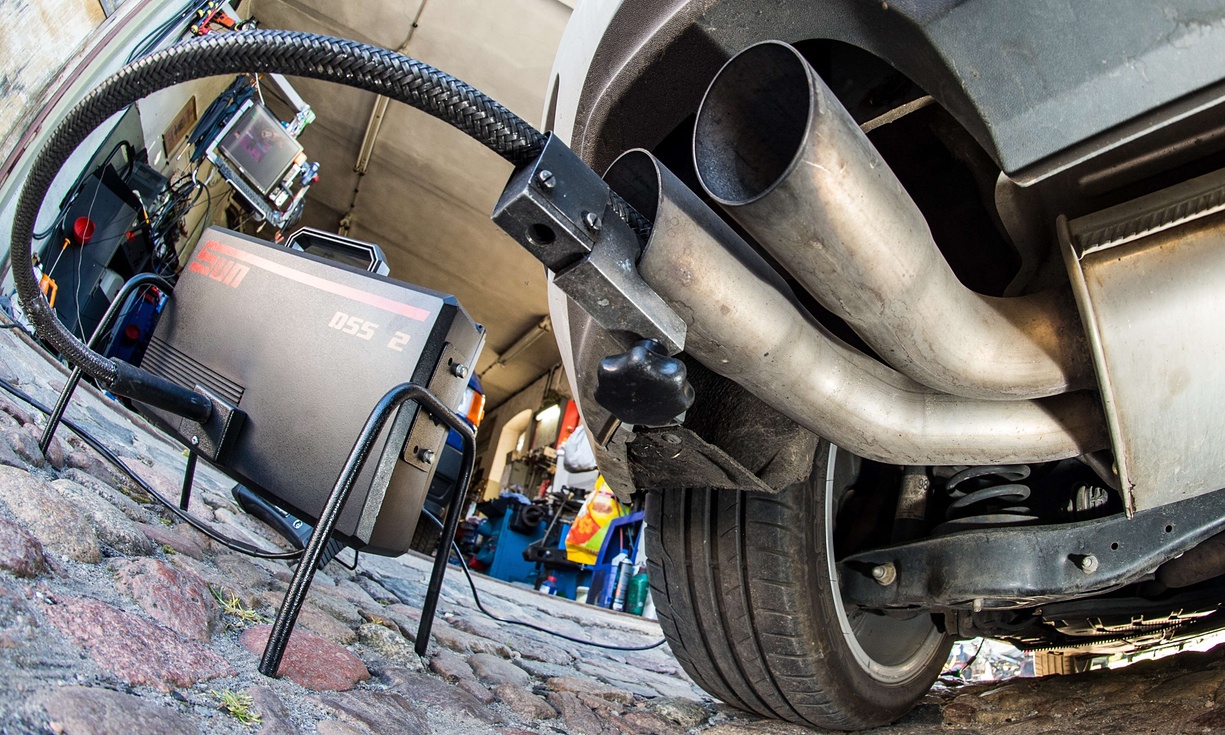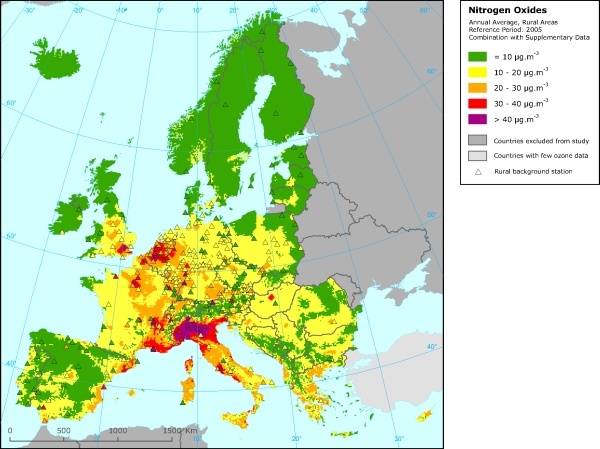In 97% of European diesel cars, the level of emission of harmful substances exceeds the declared standards

The story of the mismatch between the actual amount of harmful substances in the diesel engine exhaust and the one measured in the laboratory continues to grow, like a snowball rushing from the tops of European mountains. Private company Emissions Analytics claims that according to real tests, more than 97% of all diesel cars sold in Europe, nitrogen oxide emissions are much higher than the declared standards.
Apparently, the Volkswagen concern, with its proven fact of forgery, was simply the first to fail. And the principles of work of huge companies are not much different from the principles of work of ordinary, not very responsible people: if you want cars to pass tests, you need to make them so that they pass tests. Real business conditions on the roads and concern for the environment are of little concern to the business, as long as it has a profit.
The products of such giants as Mercedes-Benz, Honda, Mazda and Mitsubishi fell under scrutiny. And although there is no solid evidence that these companies were engaged in similar forgeries and tricks, there are real numbers. Emissions Analytics compared the car exhaust under real-world conditions with Euro 5 and Euro 6, which they must comply with according to the passport. All cars have officially passed the NEDC European laboratory test tests. The figures are given according to the publication The Guardian , whose reporters familiarized themselves with the company's report.
Facts and Figures
Diesel cars from Mercedes-Benz on average produced about 0.406 g / km of nitrogen oxides (NOx) on the road, which is 2.2 times higher than the acceptable level according to Euro 5 and 5 times higher than Euro 6. A company representative explained that " “Real road conditions usually do not coincide with laboratory conditions, so the numbers may differ.”
Honda diesels already produced 0.484 g / km NOx - this is 2.6 and 6 times more than the mentioned standards, respectively. A company spokeswoman claims that it "cars are tested according to European technology."
Mazda averages out at 0.293 g / km, but depending on the model, the excess of laboratory numbers can be from 1.6 times to 3.6 times. The spokesperson claims that “according to the law, Mazda is working tirelessly to ensure that every gasoline and diesel engine fully complies with all standards.”
Mitsubishi cars produced only 0.274 g / km - from 1.5 to 3.4 exceeding the same indicators obtained in the laboratory. As their representative explained, "NEDC tests were never intended to reflect the situation when the car actually worked on the road."
It was also mentioned in the report that the emission of nitrogen oxides by Citroen, VW and Audi cars on real roads exceeded laboratory norms. Out of a total of 50 diesel cars with papers complying with Euro 6 standards and 150 cars complying with Euro 5 standards, only five models showed compliance of real nitrogen oxide emissions with laboratory parameters. All-wheel drive cars showed the most emissions, while some models exceeded the norm by 15 times, and one - even 20 times.
Secret or not
True, such results for many knowledgeable individuals did not become a sensation. Some members of the European Parliament have been fighting for years to reform the laboratory tests of engines adopted in the EU and make them reflect the reality. Catherine Bearder complains that this cannot be achieved because of the strong automotive lobby, which offers all kinds of resistance to such reforms. “Europeans have been waiting long enough for the air in their countries to get cleaner - you can't keep them waiting even longer,” she says.
Friends of the Earth activist Jenny Bates says: “With the denunciation of other manufacturers, there is even more evidence that the scandal is not just about VW. This should influence the opinion of decision makers and raise the question of the future of diesel cars. This is a shameful page in the history of the struggle for public health, and this inability to prevent the appearance of cars that violate pollution standards will cost us many lives. ”
Although Mercedes and Honda representatives have already stated that they welcome a possible tightening of emissions standards, the chairman of the European Automobile Manufacturers Association ( ACEA) (And in combination, Renault Chairman of the Board of Directors) Carlos Ghosn [Carlos Ghosn] announced that until 2019 no progress in reducing the actual emissions of nitrogen oxide into the atmosphere is not worth waiting . ACEA is confident that for now, you just need to raise the laboratory emission limits by 70% so that they better match the actual figures. Europe NOx measurement results (2005, clickable)

My friend and I worked together on a diesel engine
A few years ago, diesel cars in Europe were touted as being economical and environmentally friendly. It was argued that they work quieter, the efficiency of diesel fuel and diesel engines is higher than that of gasoline, and they emit less harmful substances into the atmosphere. Manufacturers put on the exhaust system of diesel cars special traps of harmful particles, which significantly cleared their exhaust.
European states subsidized the purchase of diesel cars by citizens, as a result of which now their number on European roads is already about half of all cars.
True, then it turned out that the car starts up poorly with a particle trap, and it is better to remove it, in addition, a diesel engine produces several times more nitrogen oxides than gasoline. Nitrogen oxides, in particular, adversely affect people with respiratory diseases. Diesel engines are more complicated than gasoline engines and much more expensive to maintain. Already in 2014, a campaign began to rid Europe of diesel cars - probably in favor of bicycles ...
In the USA, diesel engines were traditionally not in demand - in the late 70s and early 80s, General Motors released a number of unfinished diesel models, the most famous of which was Oldsmobile.
“Oldsmobile has a lot of serious problems,” Popular Mechanic wrote in 1981. “Broken pumps and nozzles, poor cam mechanisms, cracks in the cylinder block, and even a broken crankshaft.”
“Black smoke came from the tailpipe, and this car just worked badly,” says Bruce M. Belzowski, director of the Advanced Engineering Research Group at the University of Michigan Transport Research Institute, “When people swear that they will never buy such a car again, it’s clear that reputation is suffering. "
Now, when diesel cars began to gradually become more popular in the states, another severe blow was inflicted on their reputation, which, at least, brought huge problems to Volkswagen, and at the very least - launched a wave of changes in environmental standards and related laws in Europe .
And only Elon Musk can rejoice in this state of affairs, promoting his electric cars in gradually opening markets.

